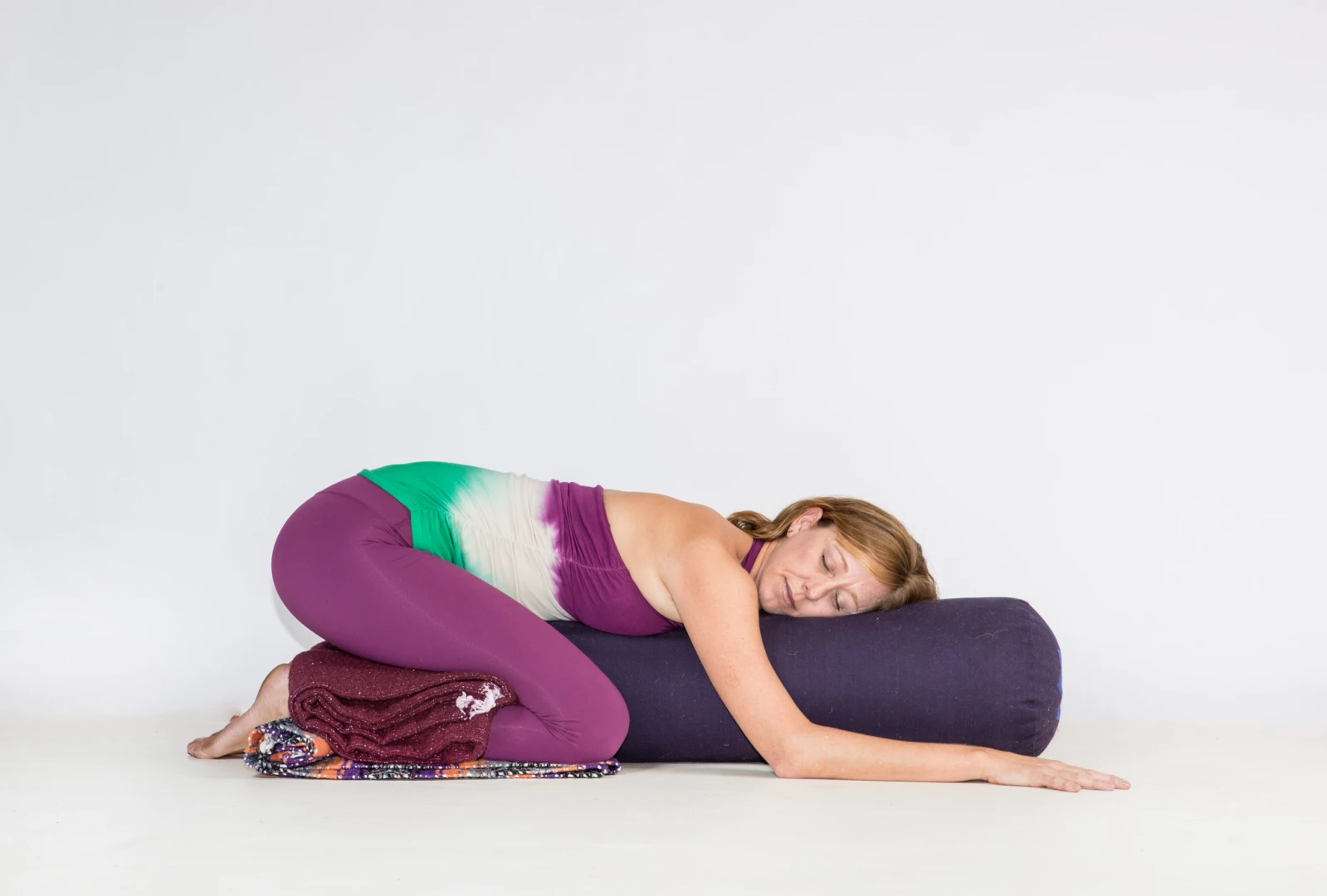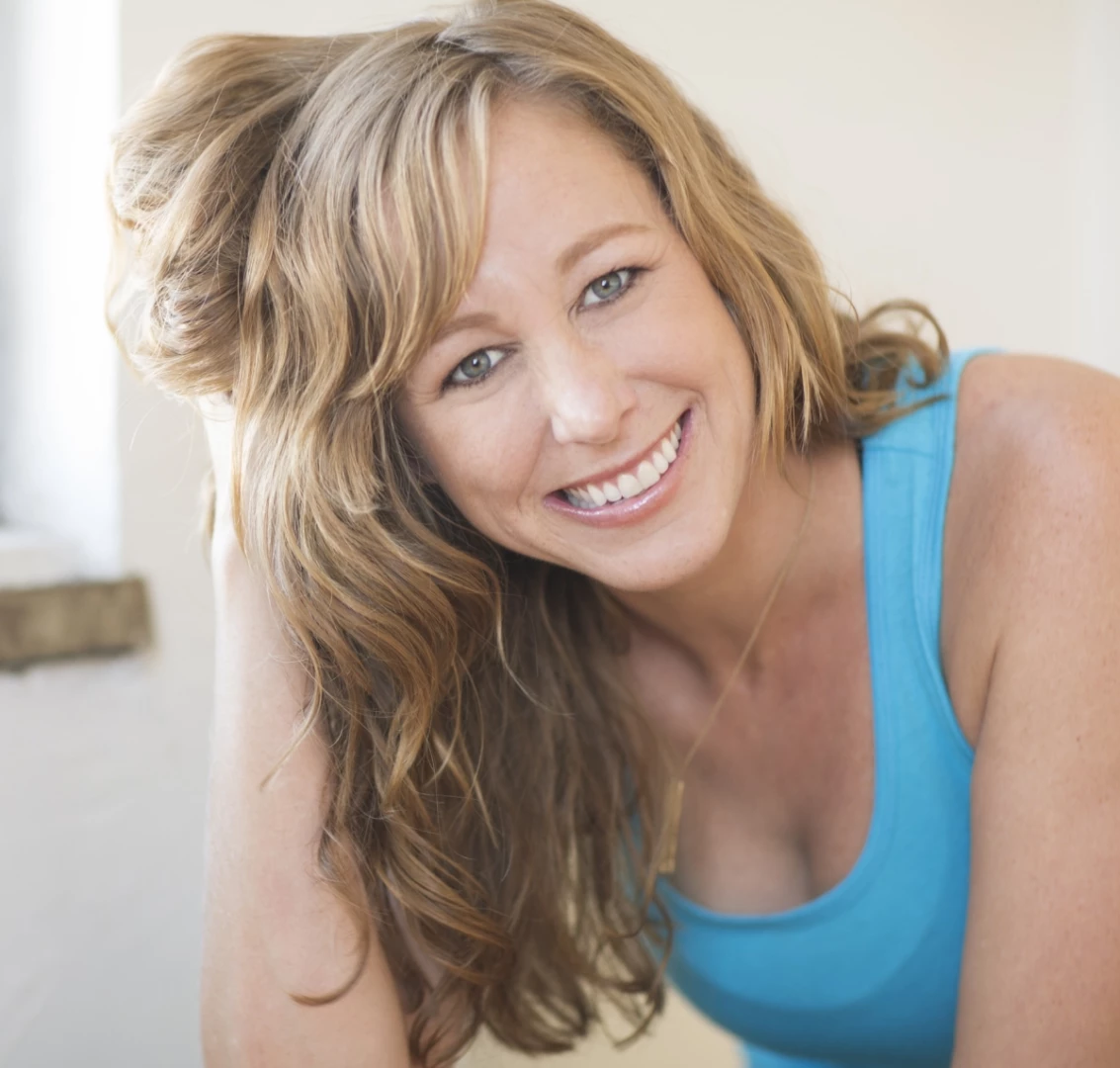Yoga for Mental and Emotional Healing – Benefits of Restorative Yoga Therapy

What is Restorative Yoga Therapy? Restorative yoga involves using props to support the body in various seated and supine postures to passively stretch and open the body. And that’s where Restorative Yoga Therapeutics taught by integrative yoga therapist, clinical psychologist and author of Yoga for Emotional Balance Bo Forbes changes course.
Bo defines Restorative Yoga Therapeutics for mental and emotional healing as a practice in which practitioners are lying still supported by props with zero muscular contraction. That means very a minimal amount of elevation and a lot of support to “relax the body into expansion.” This approach is thought to be more therapeutic than one that strives for an expansive opening alone.
Considered mind-body medicine, Restorative Yoga Therapeutics works on the nervous system — our gateway to healing and transformation.
Yoga For Relaxation
Note: The Autonomic Nervous System (ANS): Your autonomic (or involuntary) nervous system has two branches: the sympathetic and the parasympathetic. The sympathetic nervous system (fight-flight-freeze) increases heart rate, blood pressure, cortisol levels, and muscle tension, while the parasympathetic nervous system (rest-digest and reflect-redirect) lowers heart rate, blood pressure, cortisol and blood sugar levels, and muscle tension.
The study of neuroplasticity offers insight into how patterns and habits are formed. It also examines the brain’s potential to create new neuropathways and patterns in response to novel input. The autonomic nervous system (ANS) provides a key source of information to the brain that can help to facilitate neurosynaptic change – new links between brain cells.
In a state of stress (fight-flight-freeze), the ANS works to maintain equilibrium. Part of this process involves activation of the default mode network, which compares current experiences to the past as a means of understanding present events. During this state the sympathetic nervous system (SNS) also responds by “ramping up” bodily systems such as heart rate and respiration, to cope with real or perceived threat.
Until the parasympathetic nervous system (PNS) is activated, and the relaxation response is initiated, there is very little chance of moving from a habitual reaction to stress to a thoughtful, planned response.
Restorative Yoga Therapeutics attempts to elicit the relaxation response by calming the body, quieting the mind, regulating the breath, and reducing sensory stimulation (light, sound, etc.). Relaxation then allows for the opportunity to address stress rather than react to it.
This process can initiate a gateway to change. It can also lesson the symptoms of anxiety and depression, which are also linked to the autonomic nervous system.
The Tortoise and The Hare
Lasting transformation occurs as part of a process. Society and the media tell us that we can experience instant and dramatic change through “big” interventions. In the context of our emotional experience, dramatic interventions can be very dysregulating. In some cases the stress or distress associated with rapid change triggers a SNS response, which only further reinforces old behavior patterns.
Bo advocates an approach that encourages subtle and progressive change over time to create lasting and integrative transformation. Her golden rules: less is more; comfort is key; and slow and steady wins the race.
Yoga Practice Lab
Let’s practice a technique that can help to increase the relaxation response. You will need: a bolster (or a couple of pillows), two or three blankets, and its nice to have an eye pillow handy.
Before moving into the restorative pose, notice how you feel – your level of physical energy, thoughts, and the flow of your breath.
To move into a supported Child’s Pose first place one blanket on the floor and roll it to support the topside of your ankles. Place the top of your feet onto another blanket. Next, fold a blanket to place behind your knees. With your knees apart sit back toward your heels. Slide the bolster between your thighs and lay your torso over the bolster, resting your elbows on the floor and turning your head to one side. Make sure that your entire torso is supported and that your belly, chest and head can fully relax onto the bolster (you may need an extra blanket or two for a little more height).
Once here try to relax and rest. When you feel the time is right to release the pose, slide your hands back underneath your shoulders and sit on either the bolster or blanket. Now notice the way you feel and any shifts in your energy levels, mind’s activity, breathing patterns, etc.
 Meagan McCrary is an experienced yoga teacher (500 ERYT) and writer with a passion for helping people find more comfort, clarity, compassion and joy on the mat and in their lives. She is the author of Pick Your Yoga Practice: Exploring and Understanding Different Styles of Yoga a comprehensive encyclopedia of prominent yoga styles, including each system’s teaching methodology, elements of practice, philosophical and spiritual underpinnings, class structure, physical exertion and personal attention. Currently living in Los Angeles, Meagan teaches at the various Equinox Sports Clubs, works privately with clients and leads retreats internationally. You can find her blog, teaching schedule and latest offerings at www.MeaganMcCrary.com, as well as on Facebook.
Meagan McCrary is an experienced yoga teacher (500 ERYT) and writer with a passion for helping people find more comfort, clarity, compassion and joy on the mat and in their lives. She is the author of Pick Your Yoga Practice: Exploring and Understanding Different Styles of Yoga a comprehensive encyclopedia of prominent yoga styles, including each system’s teaching methodology, elements of practice, philosophical and spiritual underpinnings, class structure, physical exertion and personal attention. Currently living in Los Angeles, Meagan teaches at the various Equinox Sports Clubs, works privately with clients and leads retreats internationally. You can find her blog, teaching schedule and latest offerings at www.MeaganMcCrary.com, as well as on Facebook.



